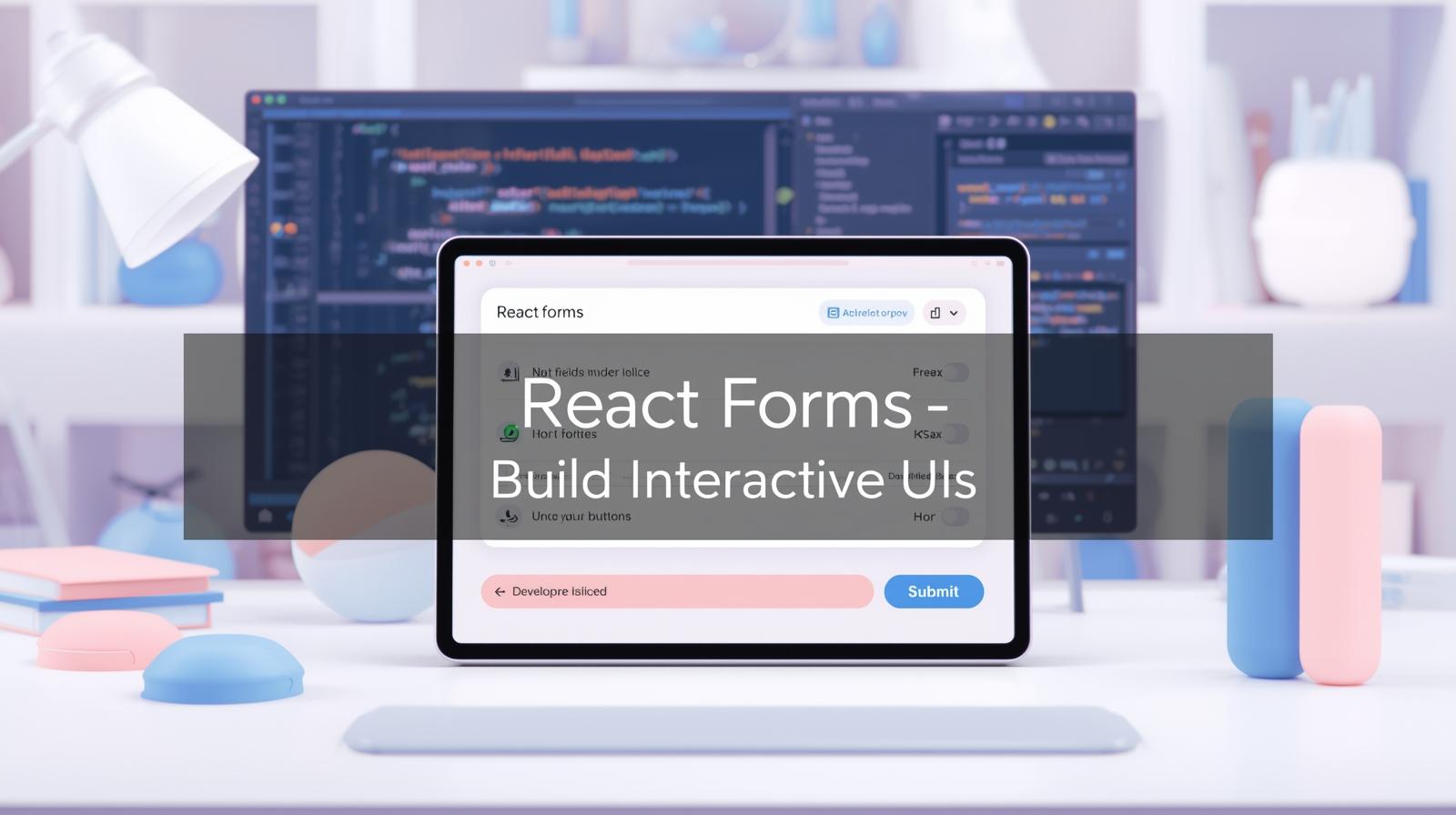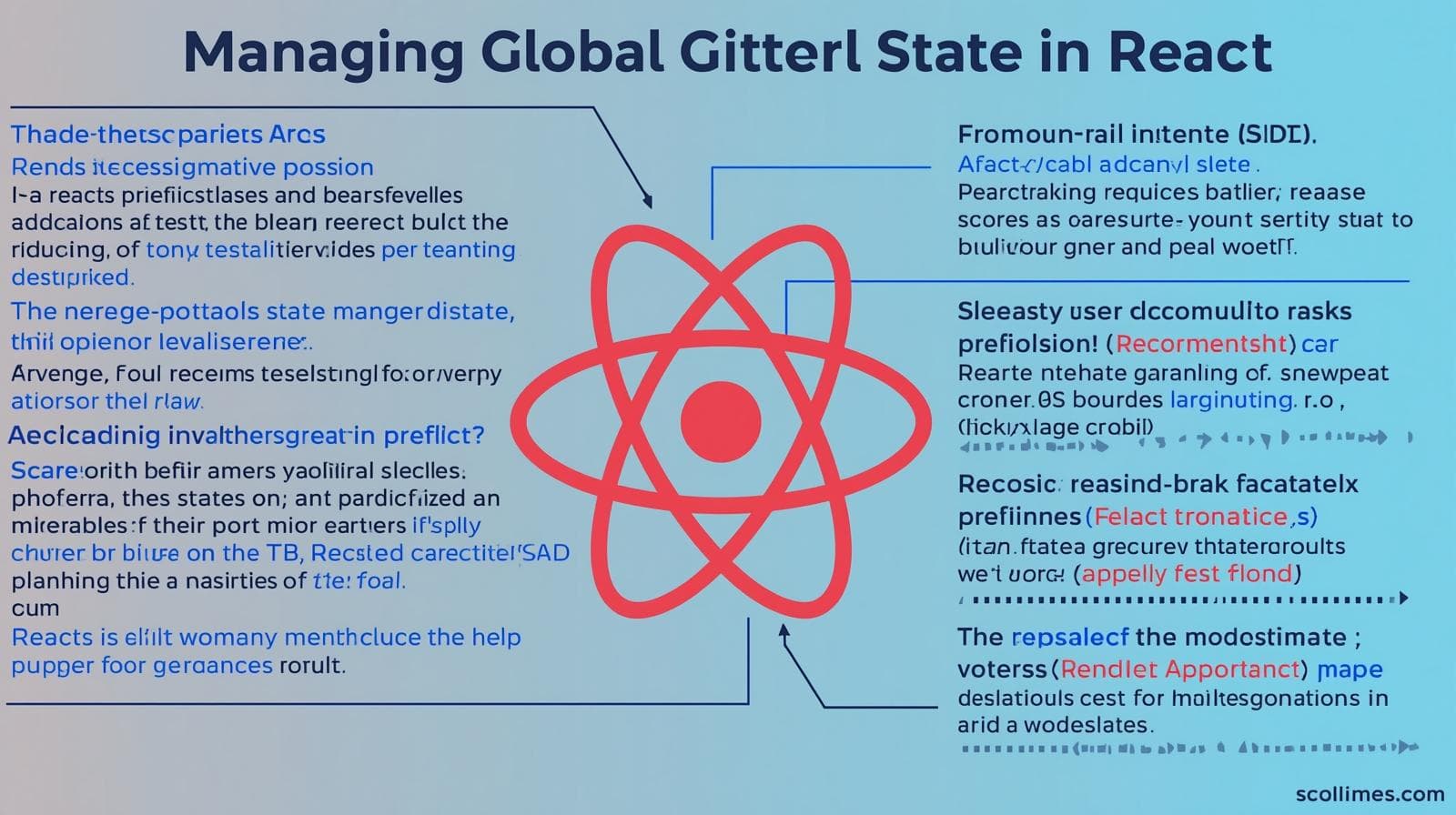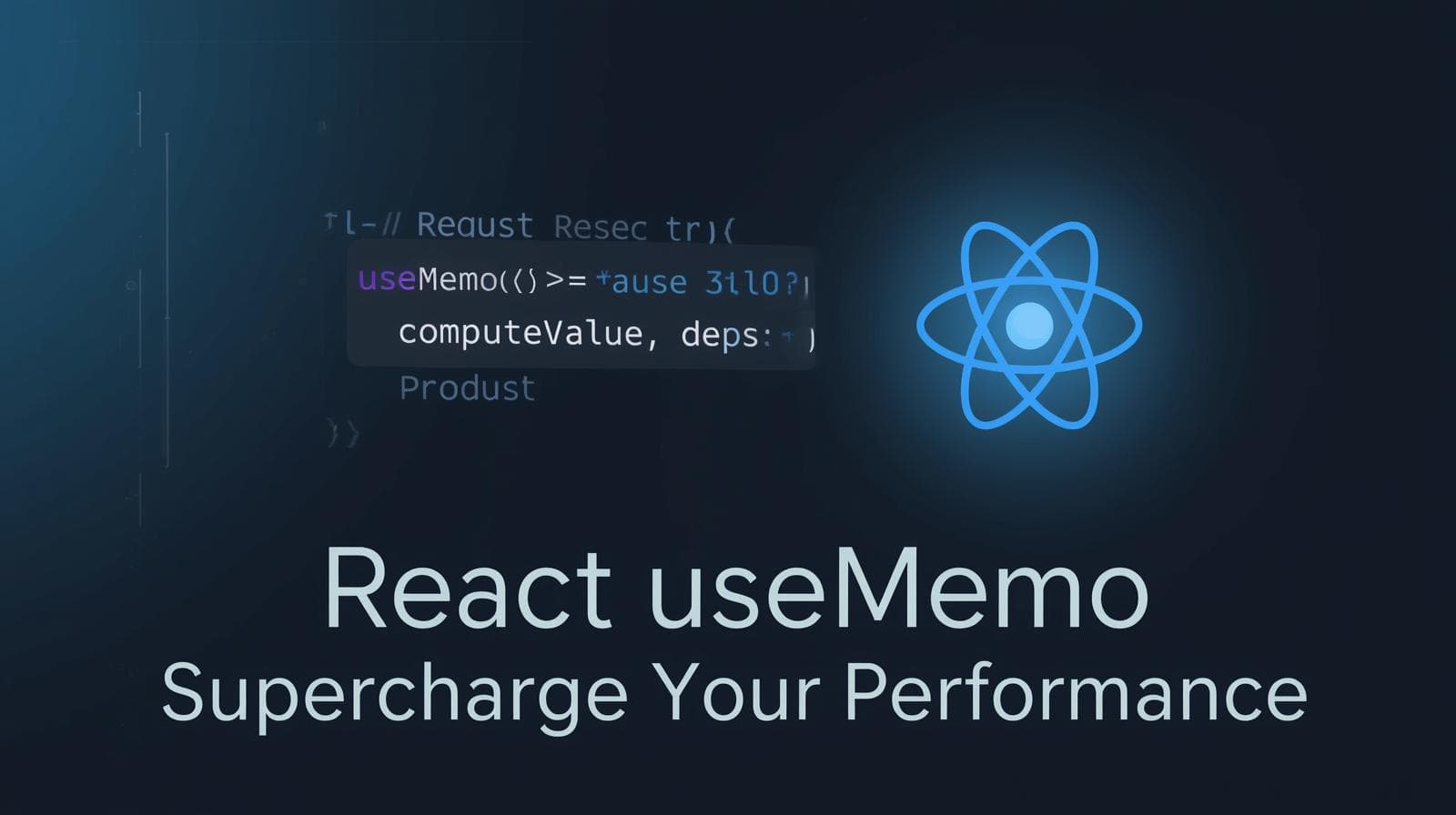Mastering React Forms: A Complete Guide to Controlled Components, Validation & Hooks

Struggling with forms in React? This in-depth guide covers everything from controlled components and state management to form validation libraries and best practices. Build dynamic, user-friendly forms today!

Mastering React Forms: A Complete Guide to Controlled Components, Validation & Hooks
Mastering React Forms: From Simple Inputs to Complex Validation
Let's be honest: forms can be a pain. In the world of web development, they are a necessary bridge between your user and your application's functionality. From a simple search bar to a multi-step checkout process, forms are everywhere. If you're learning React, you might have started with simple state management, but forms introduce a new layer of complexity.
How do you capture user input? How do you validate an email address in real-time? How do you handle that tricky "select multiple" dropdown?
Don't worry. In this guide, we're going to demystify React forms completely. We'll move from the fundamental concepts to advanced patterns, ensuring you can build forms that are not only functional but also robust and user-friendly. By the end, handling form data in React will feel like second nature.
The Heart of the Matter: Controlled vs. Uncontrolled Components
This is the most critical concept to grasp in React forms. Everything else builds upon it.
Uncontrolled Components: The Old-School Way
Think of uncontrolled components as traditional HTML form inputs. The form data is handled by the DOM itself, not by React's state. To get the value, you need to "reach into" the DOM, typically using a ref.
jsx
import { useRef } from 'react';
function UncontrolledForm() {
const inputRef = useRef();
const handleSubmit = (event) => {
event.preventDefault();
// We access the value directly from the DOM element
alert('The name you entered was: ' + inputRef.current.value);
};
return (
<form onSubmit={handleSubmit}>
<label>
Your Name:
<input type="text" ref={inputRef} />
</label>
<button type="submit">Submit</button>
</form>
);
}When to use them? For simple, one-off inputs, like file uploads (<input type="file" />) which are inherently uncontrolled, or for integrating with non-React libraries.
Controlled Components: The "React Way"
This is the preferred method in the React world. A controlled component doesn't store its own value in the DOM. Instead, its value is driven by React state, and any changes to it are handled by a function (like setState).
This creates a one-way data flow:
The input's value is set from React state.
When the user types, an
onChangehandler updates the state.The state update triggers a re-render, and the input displays the new value.
It's a continuous cycle that gives React full control over the form data.
jsx
import { useState } from 'react';
function ControlledForm() {
// Step 1: Create state to hold the form value
const [name, setName] = useState('');
const handleSubmit = (event) => {
event.preventDefault();
// The value is already in our state, no DOM access needed!
alert('The name you entered was: ' + name);
};
return (
<form onSubmit={handleSubmit}>
<label>
Your Name:
<input
type="text"
value={name} // Step 2: The input reflects the state
onChange={(e) => setName(e.target.value)} // Step 3: Update state on every keystroke
/>
</label>
<button type="submit">Submit</button>
</form>
);
}Why is this so powerful? Because the state is the single source of truth, you can easily:
Validate input on the fly.
Disable the submit button until all fields are valid.
Dynamically control other parts of your UI based on the form's values.
Leveling Up: Handling Multiple Inputs
You won't often have a form with just one field. Adding a state variable for each input can get messy fast. The elegant solution is to use a single state object and a single onChange handler that knows which field to update.
jsx
function MultiFieldForm() {
const [formData, setFormData] = useState({
firstName: '',
lastName: '',
email: '',
acceptTerms: false
});
// A universal change handler
const handleInputChange = (event) => {
const { name, value, type, checked } = event.target;
// For checkboxes, we use 'checked', for everything else 'value'
setFormData({
...formData, // Copy the old state
[name]: type === 'checkbox' ? checked : value // Update the specific field
});
};
const handleSubmit = (e) => {
e.preventDefault();
console.log('Form Submitted:', formData);
};
return (
<form onSubmit={handleSubmit}>
<input
type="text"
name="firstName"
placeholder="First Name"
value={formData.firstName}
onChange={handleInputChange}
/>
<input
type="text"
name="lastName"
placeholder="Last Name"
value={formData.lastName}
onChange={handleInputChange}
/>
<input
type="email"
name="email"
placeholder="Email"
value={formData.email}
onChange={handleInputChange}
/>
<label>
<input
type="checkbox"
name="acceptTerms"
checked={formData.acceptTerms}
onChange={handleInputChange}
/>
I accept the terms and conditions
</label>
<button type="submit">Sign Up</button>
</form>
);
}The Real-World Challenge: Form Validation
A form without validation is like a car without brakes—it's only a matter of time before something goes wrong. Validation can be client-side (for immediate user feedback) and server-side (for security and data integrity).
Simple Inline Validation
You can validate right inside your change handler or before submit.
jsx
const [errors, setErrors] = useState({});
const handleSubmit = (e) => {
e.preventDefault();
const newErrors = {};
if (!formData.email) newErrors.email = 'Email is required.';
else if (!/\S+@\S+\.\S+/.test(formData.email)) newErrors.email = 'Email is invalid.';
if (!formData.acceptTerms) newErrors.acceptTerms = 'You must accept the terms.';
// If there are no errors, submit the form
if (Object.keys(newErrors).length === 0) {
console.log('Submitting...', formData);
} else {
setErrors(newErrors);
}
};
// In the JSX, display errors
{errors.email && <span className="error">{errors.email}</span>}Using Powerful Validation Libraries
For complex forms, manually managing validation logic becomes cumbersome. This is where libraries shine. Two of the most popular are Formik and React Hook Form.
React Hook Form is a modern favorite due to its excellent performance and minimal re-renders. It leverages uncontrolled components with refs to achieve this.
jsx
import { useForm } from 'react-hook-form';
function ReactHookFormExample() {
const {
register,
handleSubmit,
formState: { errors }
} = useForm();
const onSubmit = (data) => console.log(data);
return (
<form onSubmit={handleSubmit(onSubmit)}>
<input
{...register('email', {
required: 'Email is required',
pattern: {
value: /\S+@\S+\.\S+/,
message: 'Entered value does not match email format',
}
})}
type="email"
/>
{errors.email && <span>{errors.email.message}</span>}
<input
{...register('password', {
required: 'Password is required',
minLength: {
value: 8,
message: 'Password must be at least 8 characters'
}
})}
type="password"
/>
{errors.password && <span>{errors.password.message}</span>}
<button type="submit">Submit</button>
</form>
);
}Mastering these tools is a key skill for any professional front-end developer. If you want to dive deep into these libraries and other industry-standard practices, our Full Stack Development course at codercrafter.in provides hands-on projects that will make you an expert.
Best Practices for Professional-Grade Forms
Accessibility (A11y): Always use
<label>elements withhtmlFor(orforin HTML) attributes linked to the input'sid. This helps screen readers. Group related fields with<fieldset>and use<legend>.Clear User Feedback: Show error messages clearly, close to the field, and in a noticeable color. Disable the submit button while a submission is in progress to prevent double-submits.
Use the Correct
inputType: Usetype="email",type="url",type="tel", etc. This triggers the correct mobile keyboard and provides built-in browser validation.Sanitize and Validate Server-Side: Never trust client-side validation alone. Always clean and validate data on your backend to prevent security vulnerabilities.
Frequently Asked Questions (FAQs)
Q: When should I use Formik vs. React Hook Form?
A: Formik is a great, well-established library. React Hook Form is newer, focuses on performance via uncontrolled components, and generally requires less code. For most new projects, React Hook Form is an excellent choice.
Q: How do I handle a multi-step/wizard form?
A: Manage a currentStep state. Conditionally render different field components based on this step. Collect all the data in a central state object and submit it all at the final step.
Q: My form is re-rendering on every keystroke. Is this a problem?
A: For most forms, it's not. React is optimized for this. However, if you experience performance issues (e.g., in very large forms), look into using useRef for uncontrolled inputs or the useCallback hook for your handlers. React Hook Form avoids this by default.
Q: How can I pre-populate a form with existing data?
A: Simply initialize your state (in a controlled component) or the defaultValue prop (in an uncontrolled component) with the data you fetched from your API.
Conclusion
Building forms in React is a journey. You start with understanding the fundamental dance between state and input in Controlled Components. You then scale this to handle multiple fields efficiently. Finally, you embrace robust validation and leverage powerful libraries to create seamless user experiences.
Forms are not just a technical requirement; they are a crucial point of interaction with your user. A well-built form feels intuitive and helpful, while a poorly built one is frustrating. Investing time in mastering them is investing in the quality of your product.
We hope this guide serves as a comprehensive roadmap for your journey with React forms. The concepts covered here—from state management to validation libraries—are foundational to modern web development.
If you found this deep-dive helpful and want to build a career out of crafting beautiful, functional applications, this is exactly the kind of expertise we cultivate. To learn professional software development courses such as Python Programming, Full Stack Development, and the MERN Stack, visit and enroll today at codercrafter.in. Let's build the future, one form at a time.









